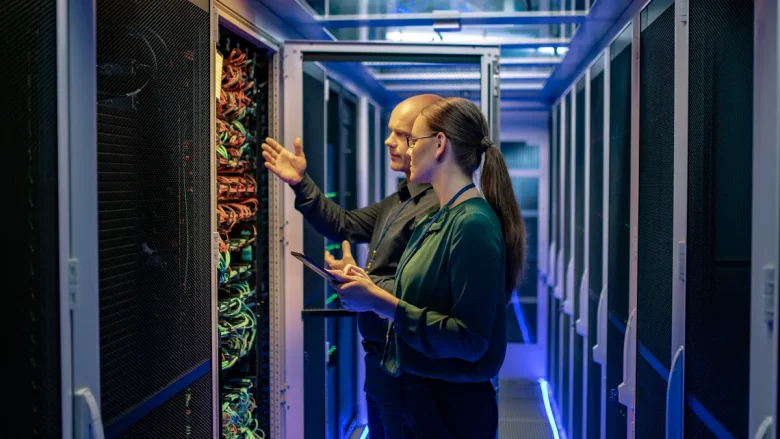Astute insurers have no intention of waiting to see how long their antiquated systems will last. They are updating their mainframes as a strategic move toward speed, agility, and future-proofing, not as a show-off endeavor.
The Silent Immediacy of Modernizing Mainframes
The mainframe is not glamorous, let us face it. It is not what you discuss at tech conferences or highlight in investor slides. It is the backbone, though. Additionally, everything else suffers as your backbone becomes more rigid with age, particularly your capacity to innovate, scale, or pivot.
Today’s insurers are under pressure from all directions:
Increasing claims expenses in an economy with inflation
Customer expectations have been consistently disrupted since the outbreak.
Margin compression due to high interest rates
Additionally, there is an impending talent cliff as seasoned COBOL experts retire without a designated successor.
Because of all of this, updating the mainframe is more of a necessity than a “good to have.”
The Business Case: More Than Just Cost Reduction
Yes, by moving workloads to more reasonably priced, cloud-based settings, modernization can reduce operational expenses by up to 40% in many situations. However, concentrating only on price would be ignoring the wider picture.
Business value is what modernization truly unlocks. Utilizing the decades’ worth of transactional data that are stuck in outdated systems is the goal. When released, this data can power AI, machine learning, and predictive analytics in ways that were unthinkable at the time those systems were developed.
Accenture’s study on AI-powered underwriting demonstrates that real change cannot occur unless your infrastructure is no longer a hindrance. You cannot anticipate magic by plugging state-of-the-art instruments into a fossilized core.
Various Insurance Industries, Various Stressors
The drive for modernization manifests itself in various ways throughout the insurance industry:
Insurers of property and casualty need to be more agile, differentiating themselves based on the customer experience while commoditizing everything else.
Due to logic and regulations buried deep within mainframes, life and annuity players are unable to use contemporary digital distribution techniques.
In order to stay afloat in a world when margins are tight, group and retirement insurers are virtually reinventing their businesses in the middle of a rushed revolution.
As they diversify into wellness and preventative care, health insurers are seeking to reduce cost structures; this endeavor necessitates digital flexibility.
In each instance, the antiquated system is not only out of date but also intentionally obstructive.
Modernization Is Not a Single Process
Modernization cannot be achieved in a single way. There is a menu instead, with each choice made to accommodate varying degrees of risk tolerance, financial constraints, and strategic aspirations:
Replatform: Raise and move. Transfer your apps to a more contemporary platform without altering their fundamental code.
Refactor: Use automated technologies to convert legacy code into contemporary languages. This improves dexterity and eases the strain on aging talent pools.
Replace: Replace outdated apps with managed services that are simpler to grow and operate (and less expensive).
Rethink: Give it your all. Utilize cloud-native thinking, streamlined apps, and new architecture to rebuild your processes.
These transfers are far less traumatic now than they were in the past thanks to modern migration tools. Cloud-native tools, automation, and sophisticated SaaS solutions provide quick and affordable migration routes that were not accessible even five years ago.
Tech and Talent: Two Emergencies
Talent is another aspect of this story that spreadsheets do not reveal.
Insurers are left with fragile systems that no one under 40 knows how to maintain as senior mainframe specialists leave the industry. That is existential, not merely inconvenient.
A new generation of tech talent—developers and engineers who wish to work with contemporary languages, try out artificial intelligence, and make a difference—must be drawn in by modernizing. The goal is to transition from dinosaur technology to dynamic ecosystems.
What is at Risk
The last leg of the digital transformation marathon is mainframe modernization. Making sure that what works can continue to develop, scale, and react is more important than replacing it.
Effective modernization enables insurers to:
Implement new features five times quicker.
Reduce the cost of infrastructure
Unlock AI and make decisions in real time.
Facilitate smooth omnichannel interactions
Remain competitive in a market that is volatile and has narrow margins.
The question is not whether it will happen, but rather how soon.
To sum up, insurers benefited greatly from legacy mainframes. However, the time they were designed for is long gone. Leaders in insurance are turning to the future—to cloud-first agility, data fluidity, and resilience. And the bridge that connects them is the modernization of the mainframe.



